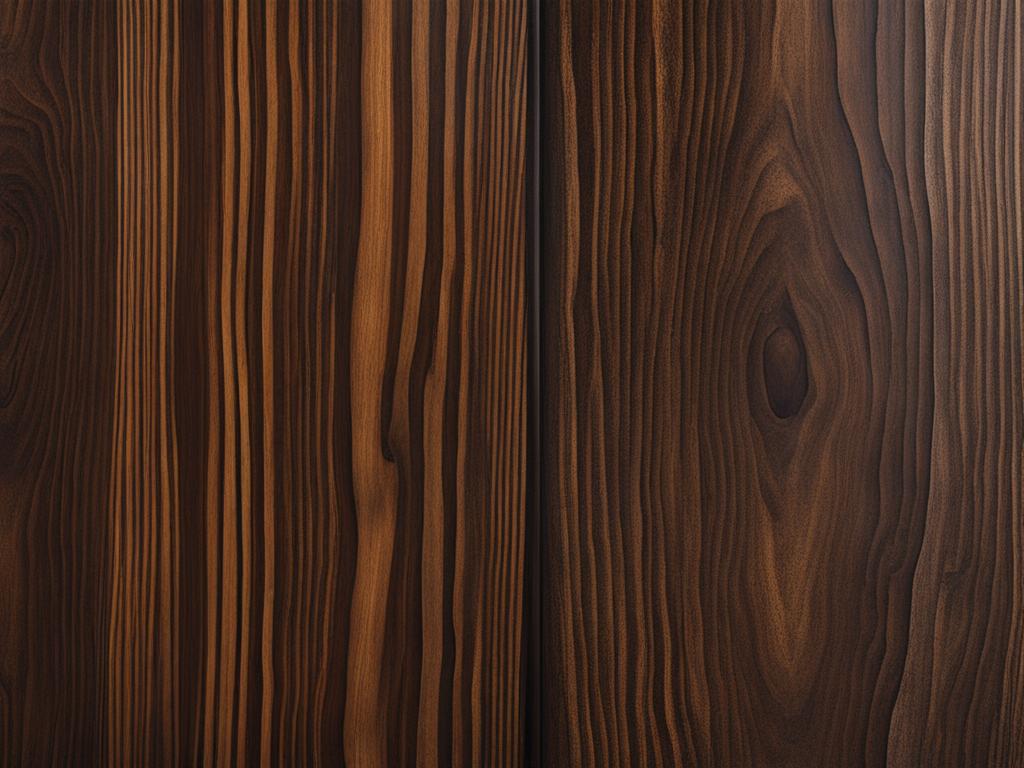When starting a home improvement project, choosing the right wood is crucial for its appeal and practicality. Douglas fir and cedar are two popular options that offer various advantages in terms of cost, applications, and maintenance requirements.
Douglas fir is a coniferous tree with a straight trunk and reddish-brown bark, commonly used in boats, aircraft, and construction projects. Cedar, on the other hand, is a coniferous tree with thin bark and long, soft needles. Both woods have similar physical characteristics, such as coloration and grain patterns. They also have natural oils that make them resistant to rot and decay from moisture. However, their durability against moisture and rot varies depending on the application.
Douglas fir is a strong and affordable wood, suitable for structural support in interior settings. Cedar, on the other hand, offers natural beauty and resistance to pests and rot, making it ideal for outdoor projects. Factors like appearance, usage, and pricing should be considered when choosing between the two woods.
**Key Takeaways:**
- Douglas fir and cedar are popular wood options for home improvement projects.
- Douglas fir is strong and affordable, while cedar offers natural beauty and resistance to pests.
- Consider the specific application, appearance preferences, and budget when choosing between the two woods.
- Douglas fir is suitable for interior structural support, while cedar is ideal for outdoor projects.
- Both woods have natural oils that make them resistant to rot and decay from moisture.
Origin and History of Douglas Fir and Cedar
Douglas fir and cedar are both popular choices for home improvement projects due to their unique characteristics and rich histories. Let’s delve into the origins and historical significance of these two woods.
Origin of Douglas Fir
The Douglas fir is native to the Pacific Northwest region of North America. This majestic tree can grow to heights exceeding 295 feet, with diameters reaching up to 13 feet. Its strong and durable wood has been utilized in various applications, including boats, aircraft, and construction projects.
Origin of Cedar
Cedar, on the other hand, has its roots in different parts of the world. This versatile wood can be found in regions of Europe, Asia, and certain areas of North America. It typically grows to more modest heights ranging from 20 to 80 feet.
Both Douglas fir and cedar have fascinating histories and have played significant roles in the development of human civilizations. Now, let’s take a closer look at the characteristics of these woods in the next section.
Characteristics of Douglas Fir and Cedar
Douglas fir and cedar are both popular wood options for various projects, each possessing unique characteristics that contribute to their appeal and functionality. While they share some physical traits, such as straight grain patterns and medium hardness, there are slight variations based on their origins and appearances.
- Coloration: Both Douglas fir and cedar exhibit a range of colors, from light yellow and green hues to deep reds. The specific shade can vary depending on factors such as age and location.
- Grain Pattern: The grain patterns of both woods are straight and fine, adding a touch of elegance to their appearance.
- Weight and Hardness: Douglas fir and cedar are lightweight woods with medium hardness, making them easy to work with for various projects.
- Resistance to Moisture: The natural oils present in both woods contribute to their resistance against rot and decay caused by moisture, making them particularly suitable for outdoor applications.
Appearance Differences
While both woods share some color similarities, there are distinct visual differences between Douglas fir and cedar.
“Douglas fir tends to have a lighter coloration and a more uniform grain pattern, offering a clean and consistent aesthetic. On the other hand, cedar boasts a darker hue and a mixed, wild grain pattern, adding depth and character to any project.”
Choosing between these two woods depends on personal preference and the desired visual impact of your project.

| Wood | Coloration | Grain Pattern | Weight | Hardness |
|---|---|---|---|---|
| Douglas Fir | Lighter coloration | Uniform grain pattern | Lightweight | Medium |
| Cedar | Darker coloration | Mixed, wild grain pattern | Lightweight | Medium |
Comparing Douglas Fir vs Cedar
Douglas fir and cedar are both popular choices for wood in home improvement projects. While they have some similarities, each wood has its own distinct characteristics and advantages. Let’s take a closer look at the appearance, cost, and pros and cons of both woods to help you make an informed decision.
Douglas Fir Appearance and Cost
Douglas fir has a beautiful light brown color with a reddish tint, adding warmth and brightness to any room. Its grain pattern is uniform and consistent, giving it a sophisticated look. When it comes to cost, Douglas fir is more budget-friendly compared to cedar, making it an attractive option for homeowners looking to save money on their projects.
Cedar Appearance and Cost
Cedar has a distinct darker color that adds a cozy and rustic feel to spaces. Its soft texture creates a warm and inviting atmosphere. The grain pattern of cedar is wild and varied, offering a unique and natural aesthetic. However, the beauty of cedar comes at a higher cost compared to Douglas fir.
Douglas Fir Pros and Cons
Douglas fir has several advantages that make it a popular choice. It is a strong and durable wood, capable of withstanding heavy loads and general wear and tear. Its lightweight nature makes it easy to work with, allowing for seamless installation. Additionally, Douglas fir’s light color and uniform grain pattern provide a sleek and modern appearance, ideal for sophisticated living spaces. However, it’s important to note that Douglas fir can warp and split if not properly sealed, and some individuals may find its lighter color less appealing compared to cedar’s darker tones and wild grain patterns.
Cedar Pros and Cons
Cedar offers unique benefits that make it a preferred choice for many homeowners. Its natural oils provide excellent protection against rot, decay, and insect damage, making it highly durable and low maintenance. Cedar is also known for its ability to absorb stains well, allowing for customization in terms of color. However, the main disadvantage of cedar is its higher cost compared to Douglas fir. The natural beauty and superior weather protection of cedar come at a premium price.
| Douglas Fir | Cedar | |
|---|---|---|
| Appearance | Light brown with a reddish tint | Darker color with a wild grain pattern |
| Cost | More affordable | Higher cost |
| Pros |
|
|
| Cons |
|
|
Choosing between Douglas fir and cedar depends on various factors, including personal preference, budget, and project requirements. Consider the appearance, cost, and pros and cons of each wood to determine the best fit for your specific needs and create a space that reflects your style and vision.

Conclusion
When it comes to choosing the right wood for your home improvement project, both Douglas fir and cedar offer unique characteristics and advantages. Douglas fir is a versatile and affordable option that excels in interior applications like ceilings, floors, and trim work. Additionally, it proves durable and weather-resistant, making it suitable for outdoor projects such as decks and fences. On the other hand, cedar showcases natural beauty and is highly resistant to pests and decay, making it an ideal choice for exterior applications like siding, decking, and fences.
The decision between Douglas fir and cedar ultimately depends on several factors, including budget, appearance preferences, and specific project requirements. Take into account the pros and cons of each wood, assess your needs, and make an informed decision for your next project. Whether you prioritize affordability or natural aesthetics, both woods offer viable options to enhance the appeal and durability of your home.
So, whether you are considering Douglas fir or cedar, weigh the pros and cons, consider your budget and project requirements, and ultimately choose the wood that aligns with your vision. Each wood has its unique qualities, ensuring that you can find the perfect fit for your home improvement endeavors.
FAQ
What are the benefits of choosing Douglas fir for my project?
Douglas fir offers strength, affordability, and a light brown color with a reddish tint. It is suitable for brightening up a room and is commonly used in interior settings like ceilings, floors, and trim work. It is also durable and resistant to weather conditions, making it a good choice for outdoor projects such as decks and fences.
What are the advantages of using cedar?
Cedar provides natural beauty, resistance to pests and decay, and superior protection against weathering damage. It has a darker color and a soft texture, creating a warm atmosphere. It absorbs stains well and is commonly used in exterior applications like siding, decking, and fences.
How do Douglas fir and cedar differ in terms of appearance?
Douglas fir tends to have a lighter coloration and a more uniform grain pattern, while cedar has a darker color and a mixed, wild grain pattern. The choice between the two woods depends on personal preference and the desired aesthetic for your project.
How much do Douglas fir and cedar cost?
Douglas fir is generally more affordable than cedar. The exact cost will depend on factors such as the size and grade of the boards, as well as the supplier. It is recommended to obtain quotes from multiple sources to compare prices. Cedar, on the other hand, can be more expensive due to its natural resistance and durability.
Which wood is better for outdoor use, Douglas fir or cedar?
Cedar is generally considered superior for outdoor use due to its natural resistance to rot, decay, and insects. It is commonly used for exterior applications such as siding, decking, and fences. While Douglas fir is also durable and can be used for outdoor projects, cedar offers better protection and longevity against weathering and pests.
